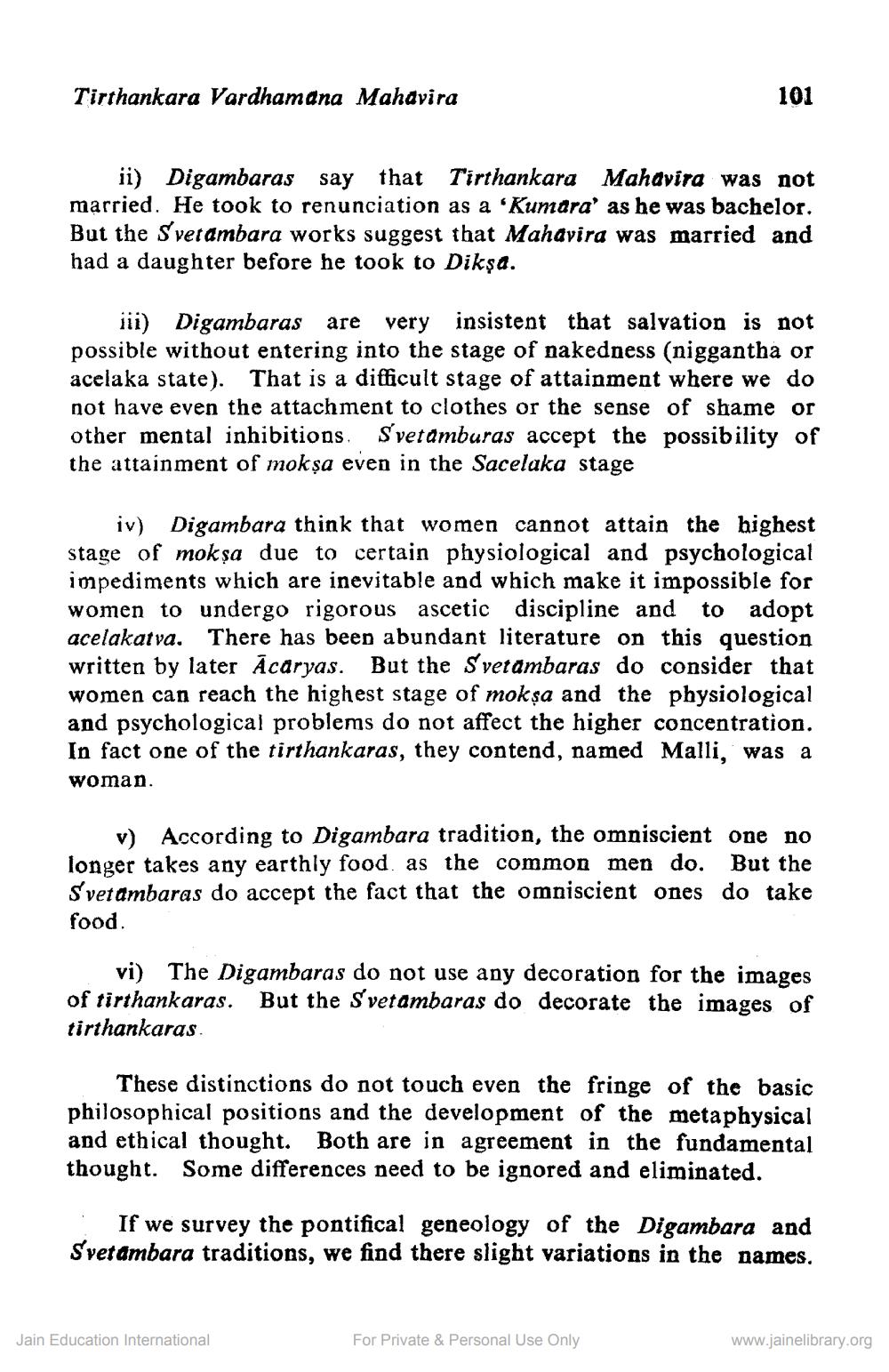________________
Tirthankara Vardhamana Mahavira
101
ii) Digambaras say that Tirthankara Mahavira was not married. He took to renunciation as a Kumara' as he was bachelor. But the Svetambara works suggest that Mahavira was married and had a daughter before he took to Diksa.
iii) Digambaras are very insistent that salvation is not possible without entering into the stage of nakedness (niggantha or acelaka state). That is a difficult stage of attainment where we do not have even the attachment to clothes or the sense of shame or other mental inhibitions. Svetamburas accept the possibility of the attainment of mokṣa even in the Sacelaka stage
iv) Digambara think that women cannot attain the highest stage of mokṣa due to certain physiological and psychological impediments which are inevitable and which make it impossible for women to undergo rigorous ascetic discipline and to adopt acelakatva. There has been abundant literature on this question written by later Ācāryas. But the Svetambaras do consider that women can reach the highest stage of moksa and the physiological and psychological problems do not affect the higher concentration. In fact one of the tirthankaras, they contend, named Malli, was a woman.
v) According to Digambara tradition, the omniscient one no longer takes any earthly food, as the common men do. But the S'vet ambaras do accept the fact that the omniscient ones do take food
vi) The Digambaras do not use any decoration for the images of tirthankaras. But the Svetambaras do decorate the images of tirthankaras.
These distinctions do not touch even the fringe of the basic philosophical positions and the development of the metaphysical and ethical thought. Both are in agreement in the fundamental thought. Some differences need to be ignored and eliminated.
If we survey the pontifical geneology of the Digambara and Svetambara traditions, we find there slight variations in the names.
Jain Education International
For Private & Personal Use Only
www.jainelibrary.org




